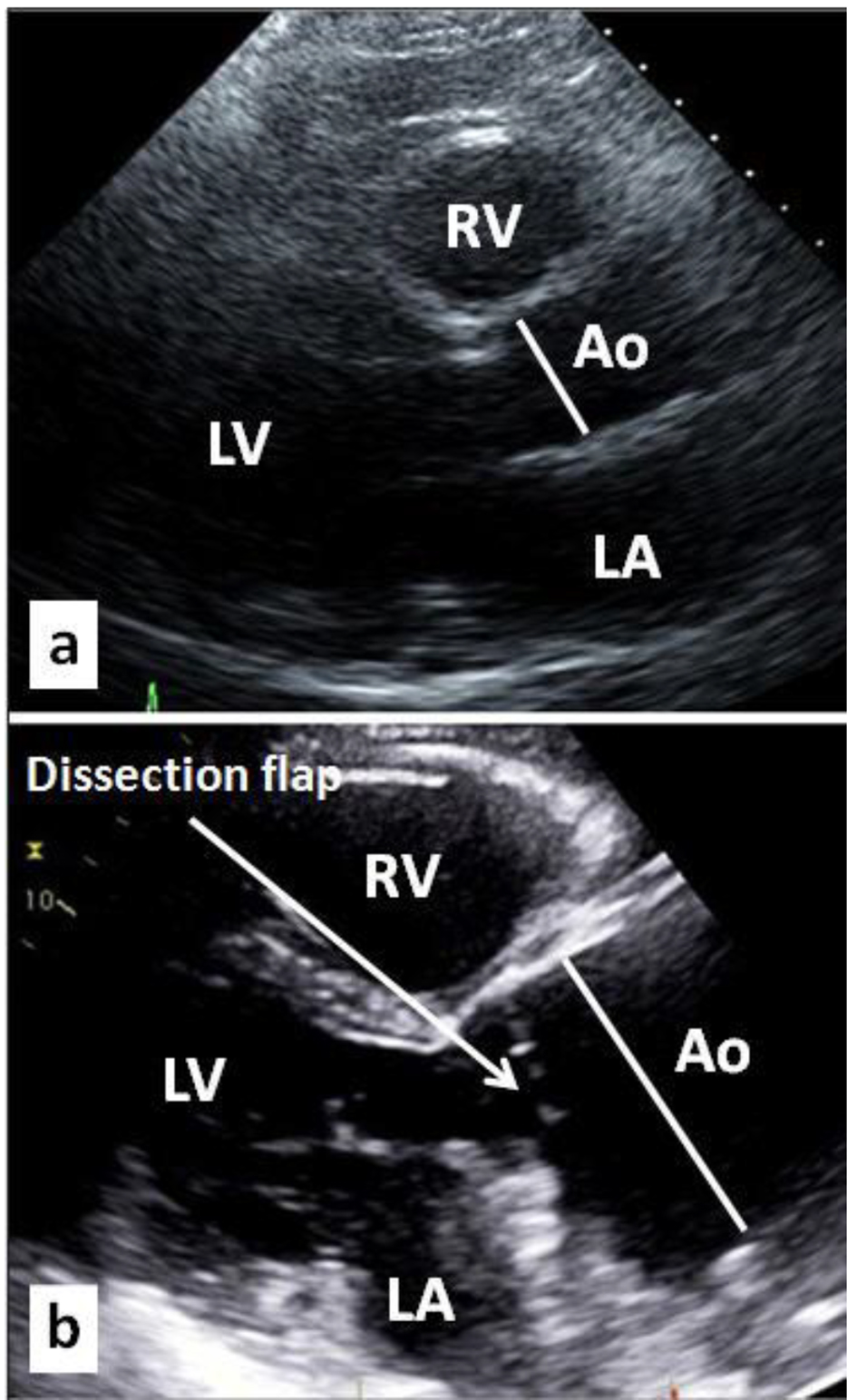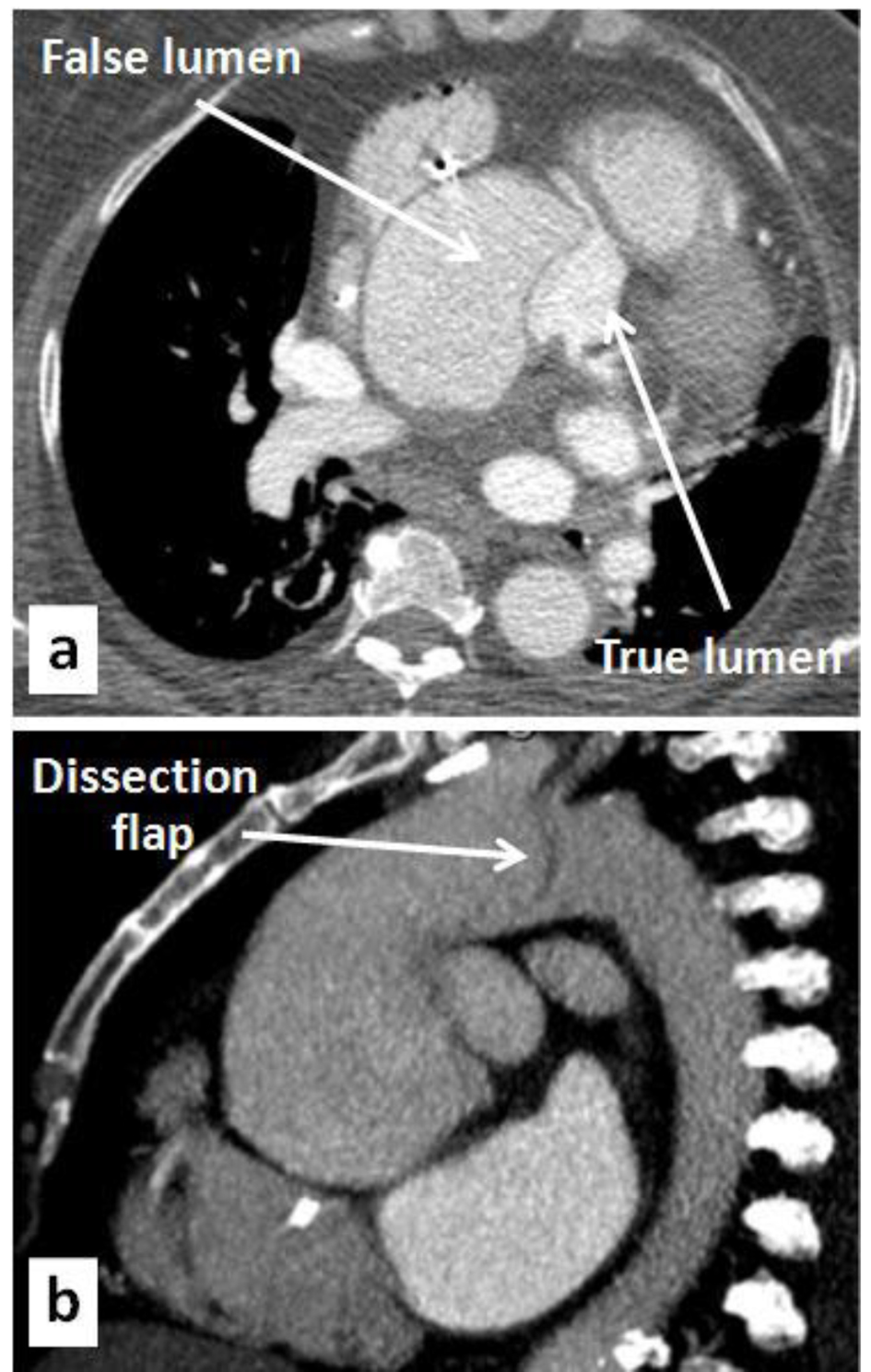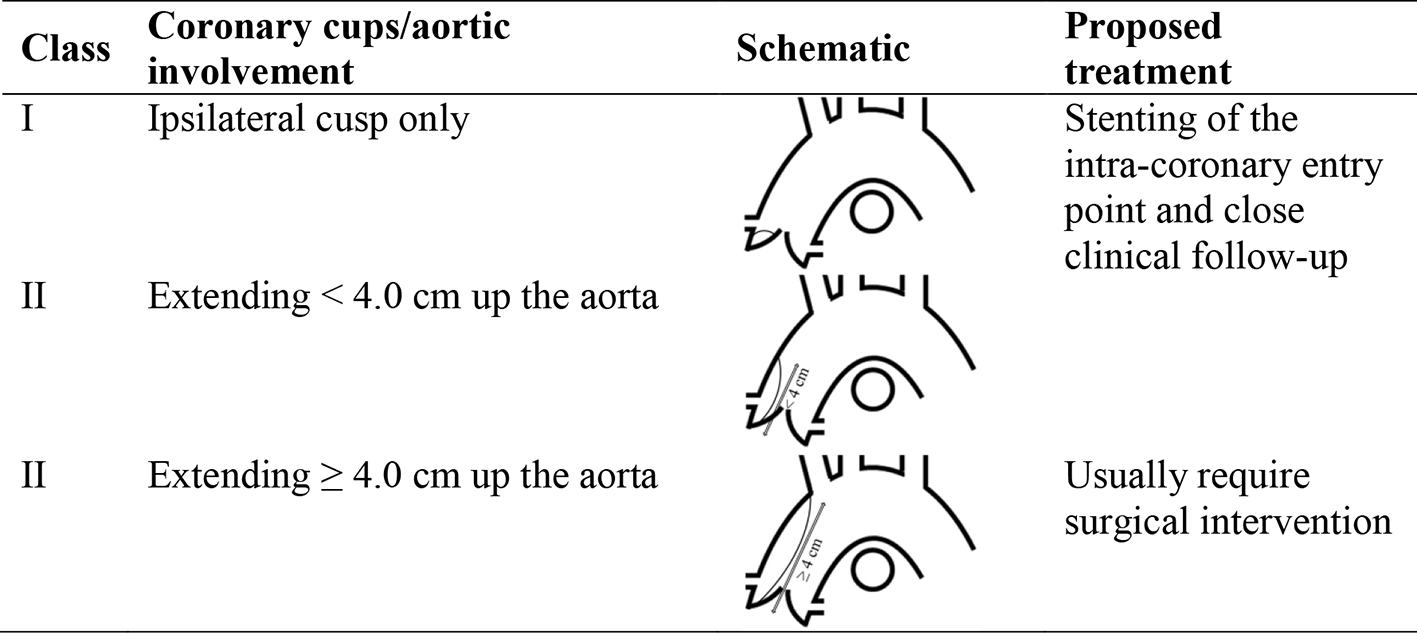| Sakakura et al [8] | 79 | M | Angina | Proximal RCA stent | Right aorto-coronary | IVUS-directed intimal tear stent |
| Fiddler et al [9] | 65 | F | AMI | RCA stent (ITAAD caused by guidewire; tamponade) | RCA ostium, aortic root and ascending aorta | Observation |
| Kerut et al [10] | 79 | M | Angina | Angiography (prior CABG and LM stent) | Orifice of LM and up 4 cm | Observation |
| Ghaffari and Pourafkari [11] | 30 | M | Coarctation of aorta | Aortography (high pressure contrast; curved catheter) | Proximal to right brachiocephalic artery | Observation |
| Gorog et al [12] | 56 | F | Suspected coronary disease | Angiography (difficulty advancing guidewire) | Femoral artery to aortic arch | Entry point stent at external iliac |
| Shah et al [13] | 52 | M | Inferior AMI | Difficult PCI | RCA cusp and upward in the ascending aorta | Stent of the RCA and entry point |
| 68 | M | Angina | Circumflex stent (guidewire tip unroofing; forceful contrast injection) | Left main cusp | Left main stent
Subsequent CABG |
| Welch et al [14] | 65 | F | inferior AMI | Multiple RCA stents | RCA cusp to brachiocephalic artery | Delayed surgery with aortic graft and CABG |
| Lambelin et al [15] | 75 | F | Aortic insufficiency | Angiography (non-selective injection of RCA) | 4 cm above AV; no coronary involvement | Immediate surgery for tamponade |
| Noguchi et al [16] | 66 | M | Inferior AMI | Circumflex stent (developed tamponade) | Brachiocephalic artery; no coronary involvement | Emergent surgery for tamponade |
| Yilik et al [17] | 65 | F | Unstable angina | Angioplasty of LAD | LAD to proximal aorta | Emergency surgery |
| 73 | F | Unstable angina | Angioplasty of RCA | RCA to aorta | Emergency Surgery |
| Tochii et al [18] | 69 | M | Left subclavian stenosis | Angioplasty of left subclavian | Left subclavian and retrogradely | Surgery |


